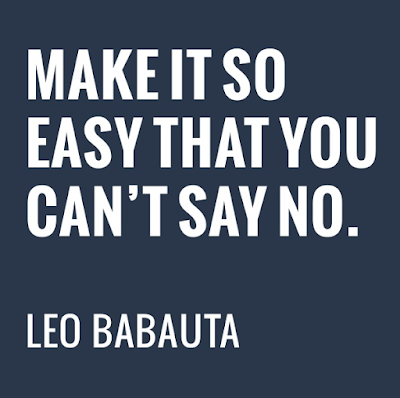Approximately 54% of people who resolved to change their ways failed to make the transformation last beyond six months, and the average person made the same life resolution ten times over without success.
Consider this: if you have had the habit of saving only $1 daily from the age of seven and increasing the amount by a mere 50 cents yearly, by the time you reached the working age of twenty-three, a total of $30,000 would have been saved! To have in hand an equivalent of six to twelve months of salary before your first job would have placed you on a financial headstart compared to most, if not all of your peers.
Many may have started some kind of savings when they were young. However, because changing and sustaining habits are difficult for most people, having such headstart is rare (unless you have a rich parent!).
So, why is it so difficult to change a habit?
The main reason is our brain.
The prefrontal cortex of the brain, which is responsible for higher-order thinking, takes more energy to function compared to the limbic system, which includes our emotions, memory and habits. Which means, it takes more effort to think about and do something new than to react out of instinct or habit.
That's why much of what we do daily happen without deliberate thinking, such as driving a car and brushing our teeth. These behaviours have been programmed as habits by repetition, training and experience. In other words, the brain is also programmed to save energy for its own self-preservation and optimal functioning.
Resistance to Change
Like animals, our survival depends on the ability to quickly detect changes in our environment and react instinctively to avoid threats. When our brains perceive a difference between what we expect and what occurs, a rapid-fire signal is produced in the orbitofrontal cortex just above the eyes which is connected to the amygdala, which manages our automatic emotional reaction. The amygdala will draw energy away from the prefrontal cortex, activating the urge to fight or flight response and mobilising our body instinctively into action.
Embedding a new behaviour and changing a habit not only takes effort and focused attention, but it can also be physiologically uncomfortable. That's why people generally avoid change or find it difficult to maintain commitment. Fortunately, there are ways we can work around the system!
Tricking Your Brain To Do Things You Don’t Want To
1. The 5 Second Rule - How to start anything in 2 steps (Mel Robbins)
The moment you have an instinct to act on a goal (or commitment) you must count down 5-4-3-2-1 (Step 1) and physically move (Step 2) or your brain will stop you.
-The 5 Second Rule: Transform your Life, Work, and Confidence with Everyday Courage
This simple 2-Step-Rule is a research-backed metacognition tool that creates immediate and lasting behaviour change.
The counting will help you focus on the goal or commitment and distract you from the worries, negative thoughts, and fears in your mind. The physical movement is important because when you move, your mind follows.
The Rule will work every time you use it. Once you stop using it, fear and uncertainty will creep back in and take control. You will come face to face with the excuses, negative feelings, insecurities, and fears that have become habits. However, if that happens, just start using the Rule again and over time you’ll experience a deeper shift inside yourself and a transformation that impacts inner strength.
2. Just do it - You don't have to be in the mood (Pychyl)
You don’t have to be in the mood to do a certain task — just ignore how you feel and get started. Most of us tacitly believe that our emotional state has to match the task at hand, which is a choice we can actually make - just do the things we need to do even though we don't feel like it. Do not wait until you are "in the mood".
That is why kids should be taught to deal with the temptations of procrastination from a young age. We may think that kids have time management problems when they procrastinate. What they have is an emotion management problem. They have to learn that they have to get on with it and this is a pragmatic thing as you don’t feel good all of the time.
3. Bit by bit - Start small even if it's very small (Pychyl)
As the African proverb says, ”The best way to eat an elephant in your path is to cut him up into little pieces”.
Even if it’s an extremely small action, a little progress will typically make you feel better about the task and increase your self-esteem, which in turn reduces the desire to procrastinate. People need to break down their tasks into very small steps that can actually be accomplished. So if it’s something like writing a resume, the first step is just opening a blank word document and write your name.
A hilarious and interesting
Ted Talk by Tim Urban illustrates how the procrastinator's brain has an Instant Gratification Monkey that lives entirely in the present moment, with no memory of the past, no knowledge of the future, and only cares about two things: easy and fun. We need to stay aware of the Monkey as we do not want it to be behind the wheel driving our behaviour. Even though the rational decision-maker will make the rational decision to do something productive, when the monkey doesn't like that plan, it just takes over the wheel.
4. Make it easy - Consistency is key (Dr. BJ Fogg)
"Daily, floss just one tooth, drink just two glasses of water, walk for three minutes, do four push-ups a day, write five lines of a book"
Don’t wear yourself out so fast in doing too much of a thing thinking that you will get more out of it. Learning to practice consistently doesn’t have to be hard. For a good habit to become sustainable and enjoyable, getting started must not be sudden. It should be made as automatic as possible. For instance, it is far better to commit to an exercise for just 5 minutes or less a day and succeed at it, and then slowly add to the habit and be consistent.
In other words, to make a habit stick, make it so easy for it to be successfully consistent from the beginning. Doing something that takes a lot of effort and energy may not easily become a habit because when you are overwhelmed with a difficult task, the amygdala kicks off a fight (resistance) or flight (ignore) reaction.
The Habit Loop (4 Laws of Behaviour Change)
The Habit Loop forms an endless cycle that is running every moment since you were born. It continuously scans the environment, predicting what will happen next, trying out different responses, and learning from the results.
The cue triggers a craving, which motivates a response, which provides a reward, which satisfies the craving that is associated back to the cue - forming a neurological feedback loop that ultimately allows you to create automatic habits.
A behaviour that lacks any of the four stages will not become a habit. Without the cue your habit will never start. Reduce the craving and you won't be motivated to act. Make the behaviour difficult and you won’t do it. If the reward fails to satisfy your desire, you’ll have no reason to do it again. Without the first three steps, a behaviour will not occur. Without all four, a behaviour will not be repeated.
Finally, you can use the Habit Loop to change your behaviour, by simply ask yourself:
- How can I make it obvious?
- How can I make it attractive?
- How can I make it easy?
- How can I make it satisfying?
Use these four steps to design good habits and do the opposite to break or change bad ones






Comments
Post a Comment